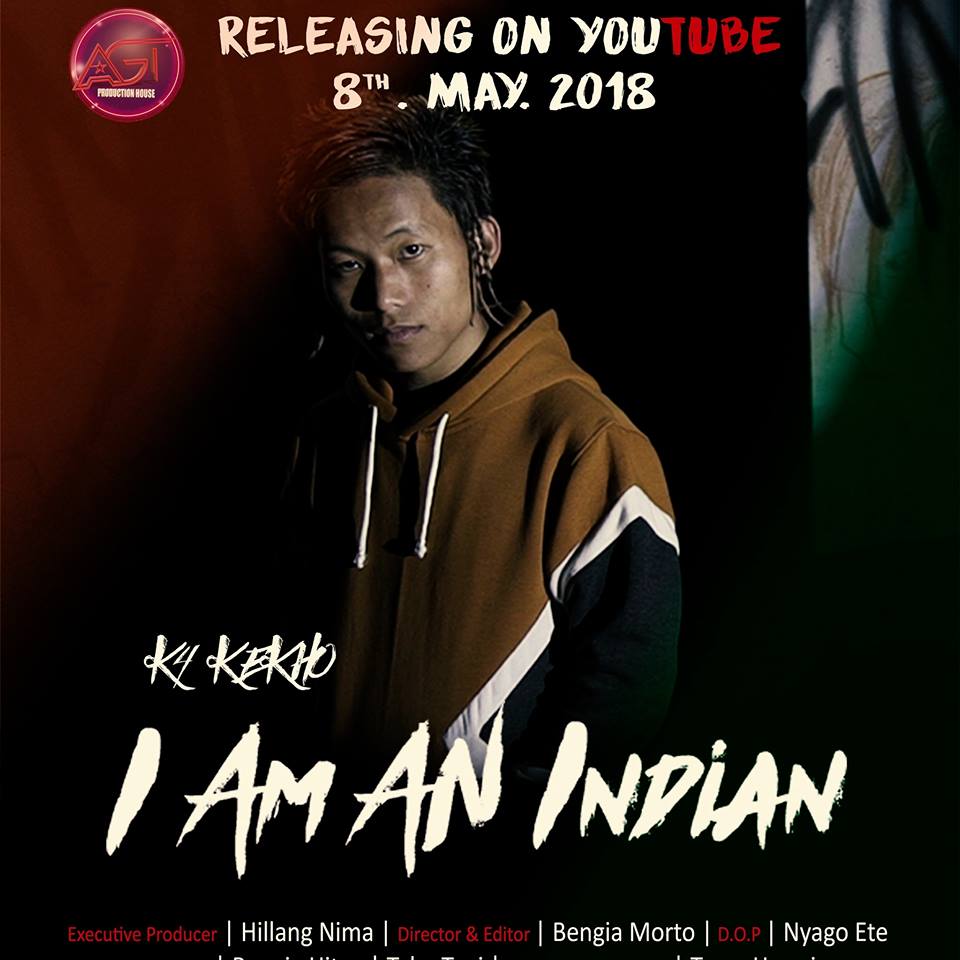Music and humour are double-edged swords. Sometimes they reinforce certain uncomfortable stereotypes, but real artists find a way to present them in ways that break barriers and bring people closer together.
This is what Kekho Thianmkho, aka K4 Kekho, a 23-year-old rapper from Lower Chinhan in Tirap district, Arunachal Pradesh, is attempting to do through his music.
In his latest music video, “I am Indian” (produced by Hillang Nima), Kekho addresses an issue which many from the frontier regions (Ladakh, Kashmir and the Northeast) encounter in mainland India every day—racism.
From unsolicited stares, harassing comments and outright hostile acts, citizens from the frontier regions are often compelled to develop thick skins. This is our lived reality. Kekho’s latest video is a reclamation of his Indian identity, laced with dark humour and stinging social commentary.

Rapping in Hindi with a heavy Arunachali accent, Kekho says (in translation), “Being an Indian from the inside, I live for money. During election time, I sell my vote for a couple of thousand rupees. I am an Indian.” In other words, the voter in Arunachal isn’t all that different, from say, Tamil Nadu.
In the segment before the bars above, he raps, “Pardon your highness! I am an Indian! Not Chinese! Look at me! I look a little bit like a Chinese. Not so tall, but ‘look little bit short’.” Again, he’s confronting racial epithets head-on, laced with a tinge of humour.
The overriding message is ‘talk to us, and you’ll know we’re just like you’.
However, there are moments of reflection and anger from the winner of Arunachal’s inaugural Rap Riot, a rapping competition, held in 2015.
“Institutions invite students from the Northeast. Then some of the people there on the roadside ask us to leave their place. Walk like a mouse, or else they’ll kill us. They look at us like they will eat us,” he raps.
The video ends with clips of Northeasterners taking to the streets in the national capital protesting against violent acts or outright racist attitudes.
Kekho raps the entire track in Hindi with a heavy Arunachali accent. This, he argues, is deliberate.
He tells The Quint, “A Hindi rap will help reach out to a lot more people. But here in Arunachal, we don’t speak pure Hindi. It’s spoken with a different accent. So, the lyrics are in colloquial Arunachali Hindi. Those listening to it may think ‘he’s speaking Hindi, but where is it from?’ Maybe then they will realise that we are also Indians.”
Growing up in a household that always had a love for music helped Kekho along the way. Initially, he tried his hand in Sufi music but soon found his calling in rapping. His teachers didn’t like it, but his peers in school absolutely loved it, even though his delivery wasn’t on point.
Thus, in 2012, he began to rap. It’s little surprise that his first rap idol was American rapper Eminem, whose tracks opened the world of hip-hop to many young Indians in the late 90s and early noughties. Known for his lyrical prowess, unique vocal style and current affair mentions laced with humour (often dark), Eminem has influenced a host of budding rappers in India.
In fact, Hip-Hop as a cultural phenomenon has made serious inroads to the frontier regions and rugged localities of urban India. Cities like Mumbai, Delhi, Chennai and Chandigarh have thriving underground hip-hop scenes. What’s made hip-hop a force in these underground scenes are artistes rapping in the vernacular—Hindi, Tamil, Punjabi, Khasi and Marathi, among others—and that they are talking about their everyday realities and struggles.
He tells The Arunachal Times (TAT), “I believe in giving people the real message. The truth is the truth, and I tell it as it is!” Most of his lyrics are in simple street lingo. “I keep my words simple to get my message across with ease. I write and rap in Hindi also to reach a larger audience base” he adds.
Although Mumbai-based artistes like Divine have found appreciation in cultural behemoths like Bollywood, most hip-hop artists in India struggle to reach larger audiences. This is particularly the case with rappers from the Northeast, who rap in English or their local tongue.
Also Read: ‘We Are Indian Too’ Slogans Will Not End Anti-Northeast Racism, Here’s Another Idea
Kekho also faces a similar problem with his fan base, which is largely limited to young kids in the Northeast, although he sometimes raps in Hindi. “Rap and hip-hop is just beginning in Arunachal. People here still prefer Bollywood songs, but I think it is the artist’s responsibility to attract the audience,” he tells TAT.
With this attitude, Kekho is seemingly on the right path to success and fame. There is one segment of the track which reflects this sentiment:
“I am a true Indian,
but I sing, ‘One day we’ll be champion,’
I am the one against the population of crores and millions.
I am an Indian.”
(Edited by Shruti Singhal)
Like this story? Or have something to share? Write to us: contact@thebetterindia.com, or connect with us on Facebook and Twitter.
NEW: Click here to get positive news on WhatsApp!
We bring stories straight from the heart of India, to inspire millions and create a wave of impact. Our positive movement is growing bigger everyday, and we would love for you to join it.
Please contribute whatever you can, every little penny helps our team in bringing you more stories that support dreams and spread hope.

